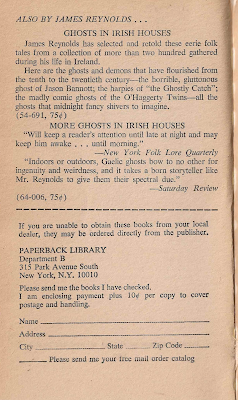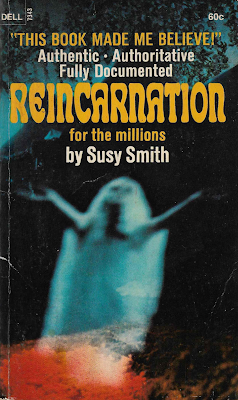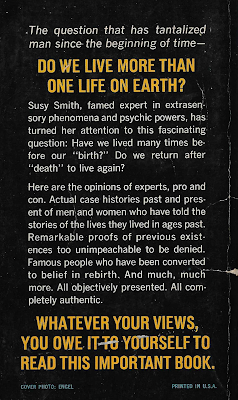A tome for the ages, Warren Smith's ultimate Zebra special clocks in at a whopping 395 pages, over twice as long as his other entries. There's a dirty little secret at the dark heart of his jungle escapade though: he only wrote the half of it! Smith's pulled a neat trick by excerpting huge passages from "ancient scribes" etc, amounting to 143 pages of 395 being quoted text. The final line of the book encapsulates his approach to these quotations: "I leave it to you, the reader. What do you think?" There's little in the way of analysis and absolutely zero fact checking or research going on beyond presenting these strange tales in bulk, but it's strangely hypnotic.
Smith's scribes and their contributions:
Smith also uses heavy quotations from Dr. A.M. Renwick's Wanderings in the Peruvian Andes from 1937, and reprints an interview with Morris K. Jessup from his inaugural Zebra special Secret Forces of the Pyramids. Ivan T. Sanderson and Gordon Creighton are cited for musings on UFOs and the Bermuda Triangle.
Another ripping tale: Erich von Daniken's Ecuadorean caves of wonder, which supposedly housed impossible ancient tech and records. Smith runs with von Daniken's story for a whole chapter on secret tunnel systems and lost precursor civilizations. The simple fact that von Daniken fabricated these caves from whole cloth is no matter to Smith, even when von Daniken admitted as such in a 1974 interview for Playboy, two whole years before this book's 1976 publication. Smith brings in a story from Ray Palmer's Search magazine for some Shaver Mystery tinge too.
True to penny-pinching form, Zebra's proud proclamation of FULLY ILLUSTRATED amounts to 11 grainy black and white photos interspersed through the text.
Table of contents:
Preface: South America, Mystery Land of the Ancients (i)
1. The Lost Cities of the Ancients (5)
2. The Lost World of El Gran Paytite (22)
3. The Marauding Monsters of South America (36)
4. The Patagonian Plesiosaur and Other Mysterious Monsters (57)
5. Mysteries of the Incan Builders (75)
6. The Mysterious City of the Clouds (92)
7. An Ancient History Carved in Stone (110)
8. The Enigma of Pre-Columbian Explorers (148)
9. Witchcraft, Wizards and Indian Magic (171)
10. Mummies, Tomb Robbers and Ancient Cities (211)
11. Mystery of South America's Subterranean Tunnels (246)
12. Amazon Warriors of Ancient America (264)
13. The Riddle of History in Stone (289)
14. Machu Picchu: City of Mysteries (309)
15. Mysteries of the Megalithic Monuments (321)
16. The Tantalizing Enigma of Tiahuanaco (339)
17. Incredible UFO Activity in South America (354)
18. Space Gods and Miracle Workers (372)
Zebra Books, 1976























































